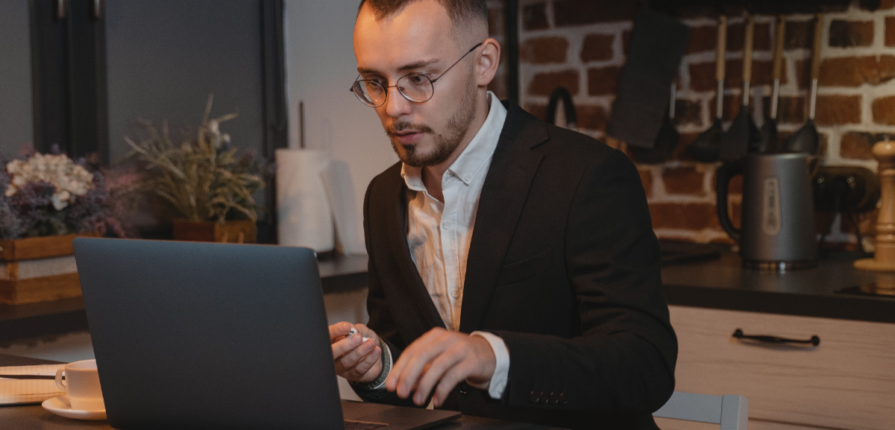By Hugh McQuaid – CT News Junkie
In order to keep the courts running during the pandemic, the Judicial Branch began using Microsoft Teams to conduct certain hearings in April and has expanded use of the platform in the months since then. The branch has also employed the Cisco video conferencing software it has previously used to conduct remote hearings with some prison inmates.
During a Connecticut Bar Association webinar, a panel of four state judges praised the new remote hearings and suggested they should remain in use even after pandemic precautions are no longer necessary.
“It works so well and it’s so convenient that it’s going to take on a life of its own whether we have concerns about health or not and I just want to say that I think it will expand, I hope it does expand, and I hope it stays,” Hartford Superior Court Judge Thomas Moukawsher said during the webinar.
The judges who participated in the panel preside over civil, criminal and family courts in the state. All agreed that remote hearings were preferable to in-person meetings in some ways that extended beyond public health considerations. The virtual platform allows courts to tackle a higher volume of cases in a shorter period of time and is especially well-suited for short hearings like pre-trial and calendar arguments, they said.
“I don’t think we’re going back,” Judge James Abrams, chief administrative judge of civil matters, said of conducting short hearings in person. “For a lot of the run-of-the-mill stuff, I think we’re going to stay with the remote platform.”
Like the other branches of government, the state court system was forced to scramble to adapt to new limitations posed by the highly contagious virus. In March, the branch closed courthouses and postponed all but top priority cases. Although the branch is now conducting proceedings through more than 100 “virtual courtrooms,” jury trials have not yet resumed.
They are on track to begin again next month, according to Abrams, who is vice chair of a group working out the logistics of conducting jury trials during the pandemic.
During a phone interview Thursday, Abrams said he expects some cases to begin jury selection in early November. When they resume, trials will look a bit different than they have in the past. Abrams said socially distanced jury trials may be conducted in more than one courtroom.
“It might be that the public might be in one courtroom, the judge and the attorneys and the witnesses might be in another, and the jury might be in a third courtroom,” he said.
The layout of a trial will depend on the setup of each courthouse but Abrams said the new special demands will reduce the number of trials a court will be able to conduct at the same time. Other logistics, like who is required to wear masks, will be left to the discretion of the trial judge, he said. When jury trials begin again, criminal cases likely will be the priority, he said.
“I’m confident, assuming that the positivity rate stays below 5%, that we’ll be able to get jury verdicts in 2020,” he said.
In June, a lawyer representing another attorney and three men with pending criminal cases sued the state in federal court, claiming the Judicial Branch was unprepared for the pandemic. The complaint alleges the branch was unequipped to handle remote document filings in criminal cases and moved too slowly to begin operating remotely, violating the constitutional rights of people with matters pending before the court. That case was dismissed in late September.
On Wednesday the judges praised the branch’s support staff for the speed at which they were able to get a working remote platform up and running. Hartford Superior Court Judge Omar Williams said the platform has had a positive impact on cases before the criminal court.
“We’re talking about significantly reduced prisoner transport and all the costs and dangers associated with that,” Williams said. “That results in a quicker outcome of cases. In some cases, a much faster discharge from incarceration for a lot of people, which itself not only secures somebody’s liberty but saves the cost of incarceration. The impact of that during a global health crisis is enormous.”
There are downsides to conducting court hearings remotely as well. The judges spoke of persistent audio issues and problems with the internet connections of participants. They urged law firms to invest in internet plans with more bandwidth to support video conferencing. In some cases, older participants had a more difficult time adapting to the software, they said.
As the court system settles into a routine that includes remote hearings, some worry that a piece of the tradition and formality of the courtroom will be lost in the mix. The judges had concerns about etiquette and professionalism in a system where participants in a court hearing could log in to the proceedings from virtually anywhere. Earlier in the webinar, Thomas MacLean of the Judicial Branch spoke about distractions that had been encountered already.
“I was told about a remote party that thought it was appropriate to attend a Remote Justice proceeding from the beach—and not their beach house. They were shirtless, on the sand, near the ocean,” he said.
Moukawsher spoke of another case where one of the participants began eating potato chips believing the judge could not see them “not to mention not hear them. Boy, were they mistaken. You’ve got to be aware of mic discipline,” he said.
Still, some of the new elements the platform introduces into the mix are improvements, they said. When the audio is working correctly, testimony is often clearer and easier to hear than inside an actual courtroom. It’s also easier for judges to watch the faces of witnesses than it is in a courtroom, where the judge is typically positioned off to one side of a witness.
“With witnesses, I find it vastly preferable to a live witness where I’m judging credibility by looking at someone’s left ear. I mean, I can see the face of the person testifying and I prefer it,” Abrams said.
Judge Michael Albis, chief administrative judge for family matters, said the physical distance between the participants can also have a calming effect in some emotionally-charged cases.
“I find that some of the more emotional scenes that would happen in a courtroom with parties who dislike each other, close to each other, don’t happen when they’re logged in from remote locations. I think their decorum for the most part is better. When it’s not, the mute button is a great tool,” he said.
_________________________________________








